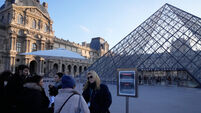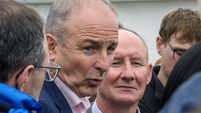US rendition flight details revealed
A hidden network of US companies, co-ordinated by a prominent defence contractor, played a key role in the covert airlift that transported terrorism suspects and their American minders, according to newly disclosed documents.
The revelations came in a New York business dispute between two aviation companies.
More than 1,700 pages of court files reveal the US government’s reliance on private contractors for flights between Washington, foreign capitals, the US military base at Guantanamo Bay, Cuba, and, at times, landing points near once-secret, CIA-run overseas prisons.
The companies included DynCorp, a leading government contractor that secretly oversaw a fleet of luxury jets, and caterers that unwittingly stocked the planes with fruit platters and bottles of wine for the transoceanic routes, according to the court files and testimony.
The business dispute stems from an obscure four-year fight between a New York-based charter company, Richmor Aviation, which supplied corporate jets and crews to the government, and a private aviation broker, SportsFlight Air, which organised flights for DynCorp.
Both sides cited the government’s programme of forced transport of detainees, or “extraordinary rendition”, in testimony, evidence and legal arguments. The companies are fighting over 874,000 US dollars awarded to Richmor by a New York state appeals court to cover unpaid costs for the secret flights.
The court files – they include contracts, flight invoices, mobile phone logs and correspondence – paint a sweeping portrait of collusion between the government and the private contractors that did its bidding – some eagerly, some hesitantly. Others turned a blind eye.
DynCorp, which was reorganised and split up between another major contractor and a separate firm now known as DynCorp International, functioned as the primary contractor over the airlift. The company had not been previously linked to the secret flights.
Airport invoices and other commercial records provide a new paper trail for the movements of some high-value terrorism suspects who vanished into the CIA “black site” prisons, along with government operatives who rushed to the scenes of their capture.
The records include flight itineraries closely co-ordinated with the arrest of accused September 11 attacks mastermind Khalid Sheik Mohammed and the suspected transport of other captives.
The private jets were furnished with State Department transit letters providing diplomatic cover for their flights. Former top State Department officials said similar arrangements aided other government-leased flights, but the documents in the court files may not be authentic since there are indications that the official who purportedly signed them was fictitious.
Some flights landed at airports near where CIA black sites operated – Kabul, Bangkok and Bucharest. Others touched down at foreign outposts where obliging security services reportedly took in US terror detainees for their own severe brand of persuasion – Cairo, Damascus in Syria, Amman in Jordan, and Rabat in Morocco.
Billing records show scores of baggage handlers, ramp officials, van and car providers, satellite and flight phone firms, hotels and caterers routinely serviced the flights and crews and earned tens of thousands of dollars.
The court records do not specify who was aboard the planes beyond a count of crew and passengers. But in several cases, the flights dovetail with the arrests and transport of some of the most prominent accused terrorism suspects captured in the months immediately following September 11: Mohammed, the purported mastermind, and Ramzi bin Alshib, his key logistics man; Abd al-Nashiri, who allegedly planned the 2000 bombing of the USS Cole; and Hambali, an Indonesia terror leader tied to the 2002 bombing of a Bali nightclub.
The detainees all vanished into the CIA’s now-closed “black site” prison network and all are now at Guantanamo awaiting military trials.
George Bush acknowledged the existence of the prison network in 2006, and the CIA director in 2009, Leon Panetta, said that the prisons were no longer in use. Detainees have claimed in legal actions that they were flown, often hooded and shackled, to the prisons, where some were exposed to simulated drowning known as waterboarding and other harsh interrogation techniques.














